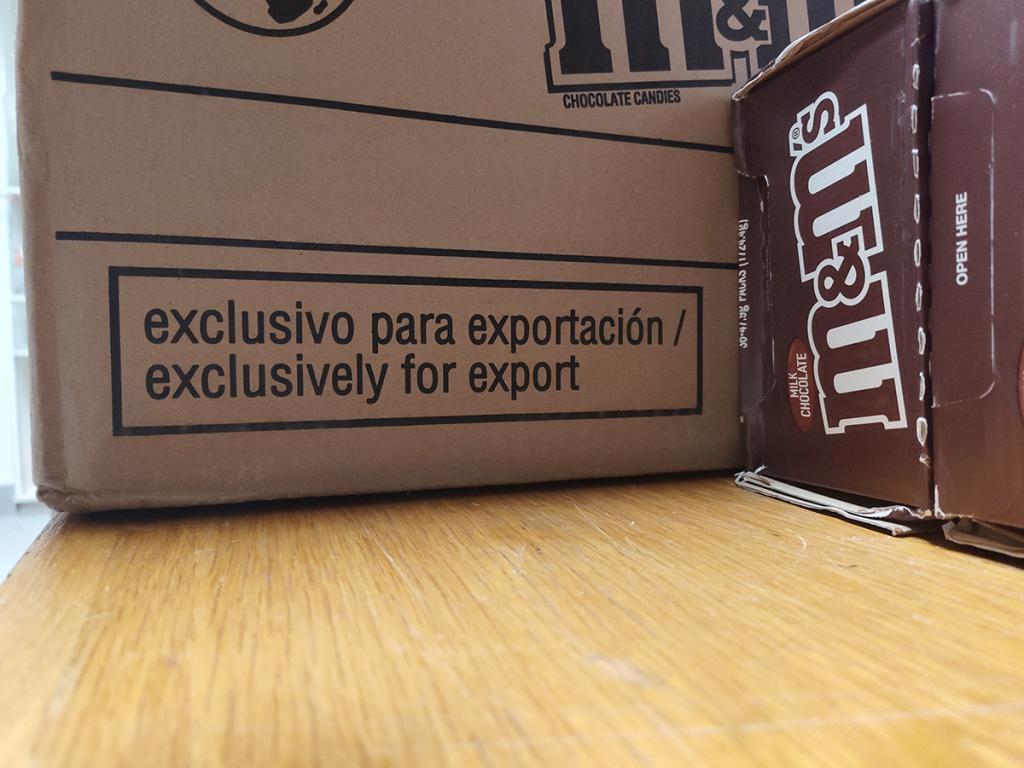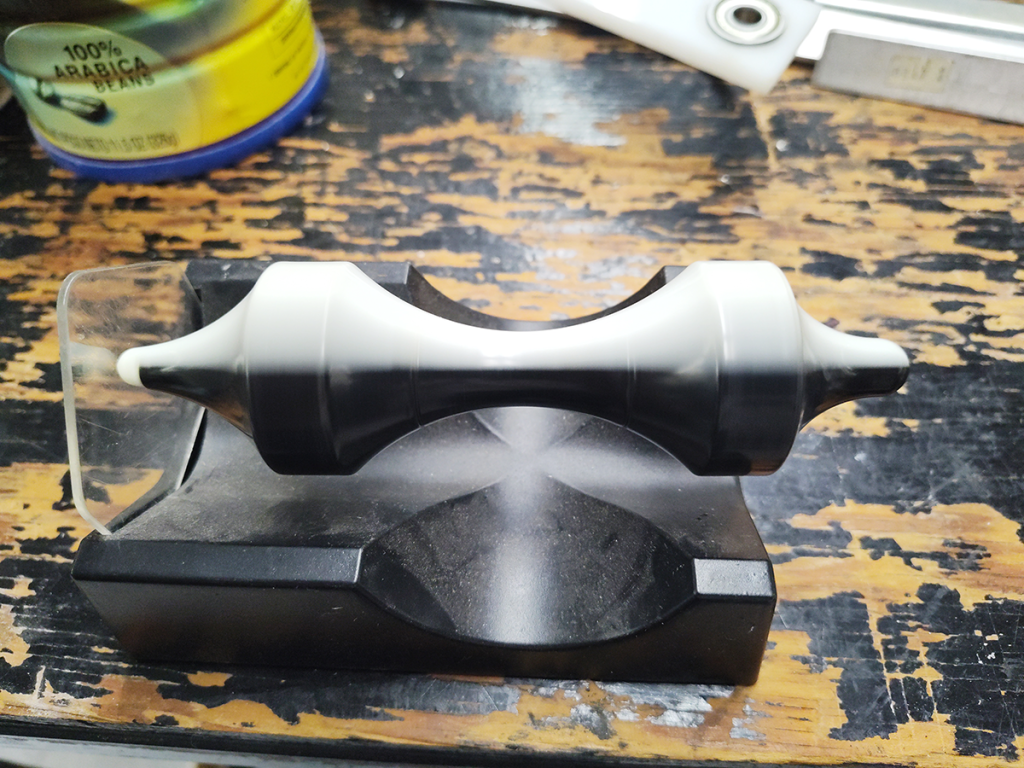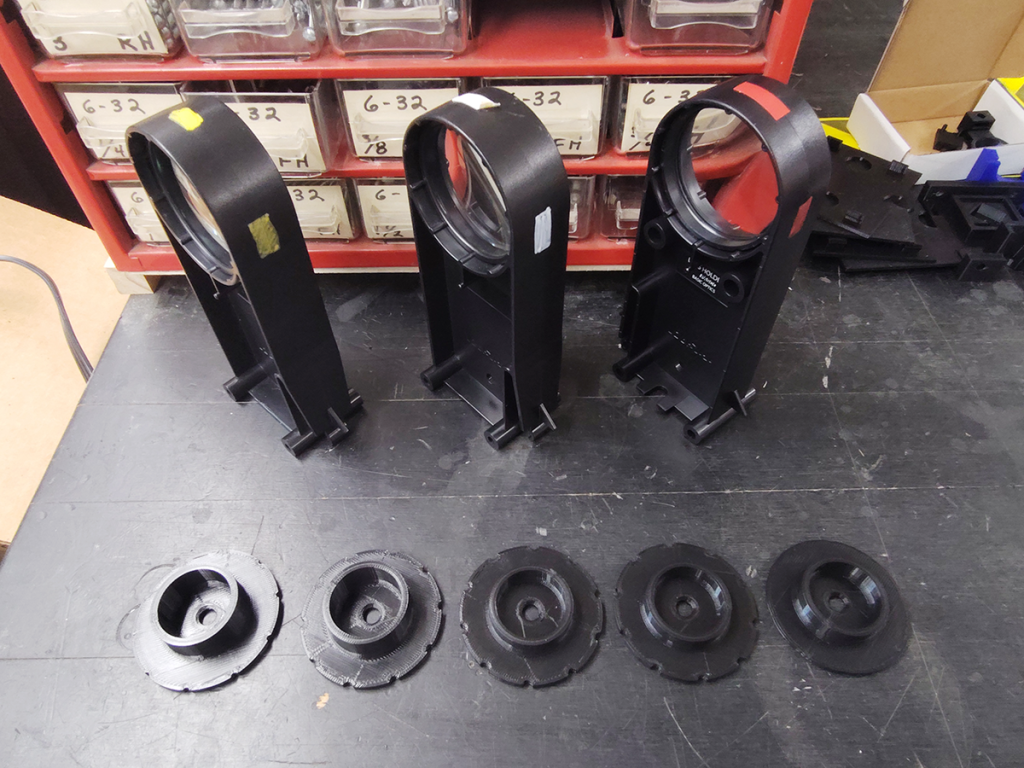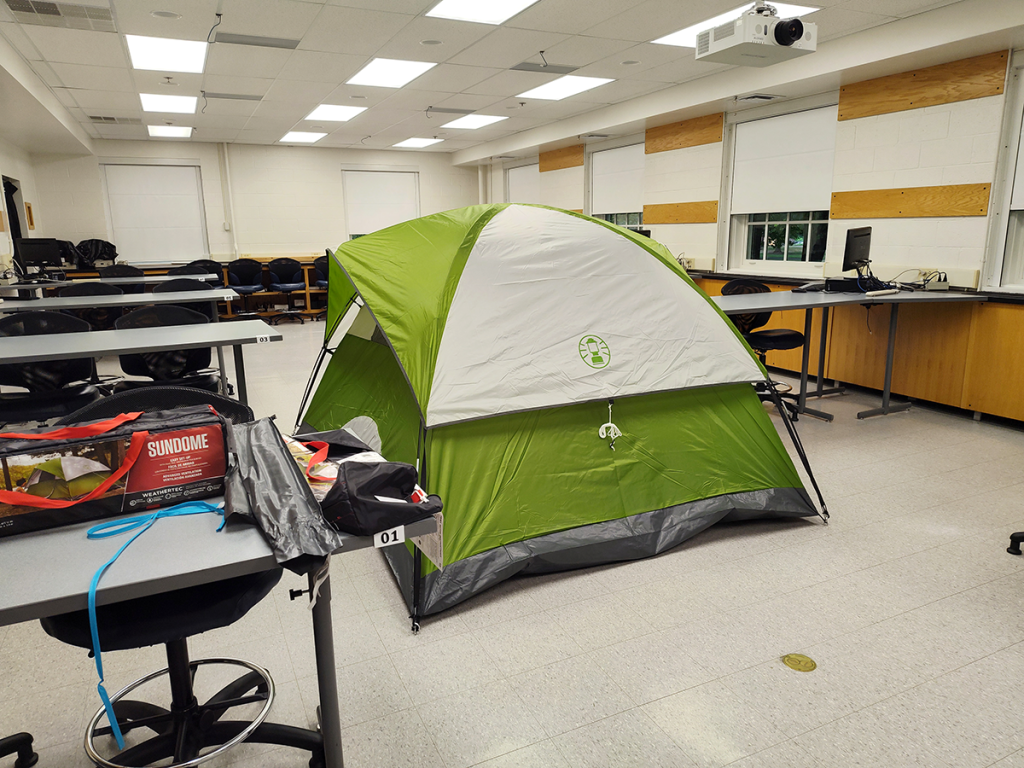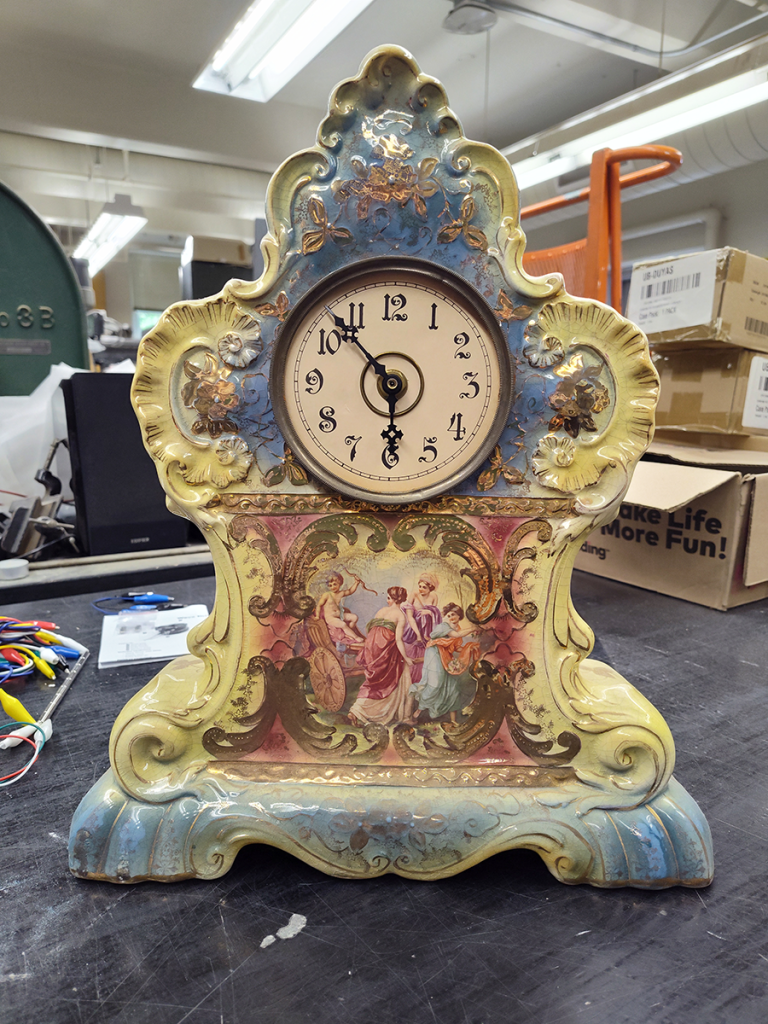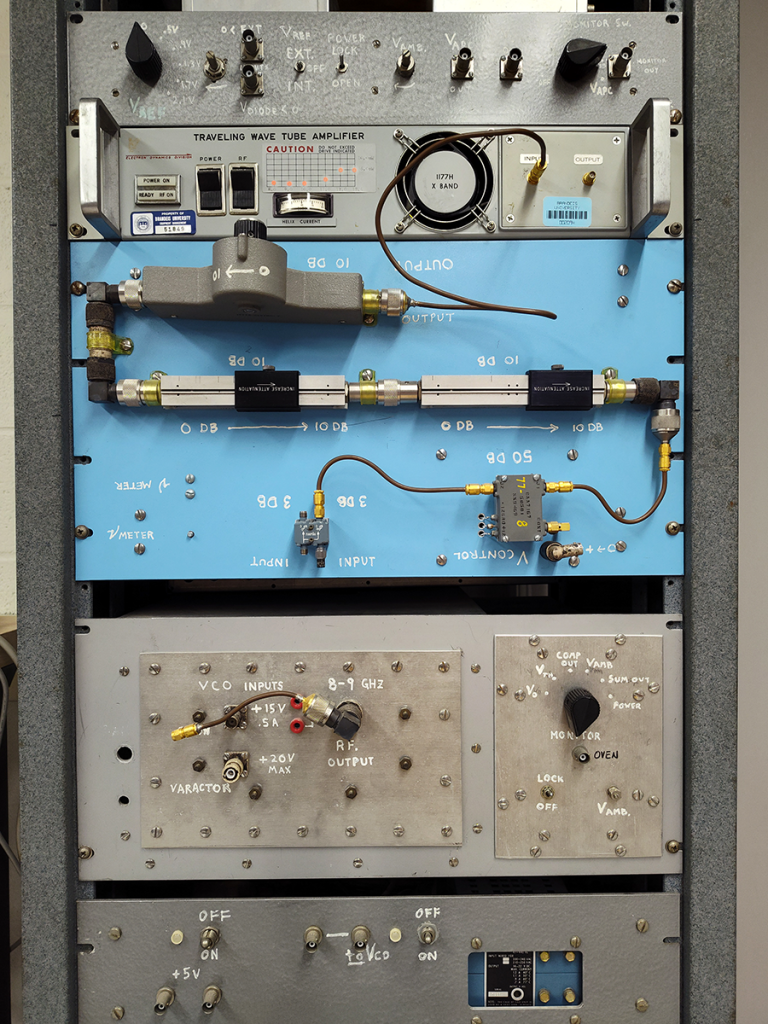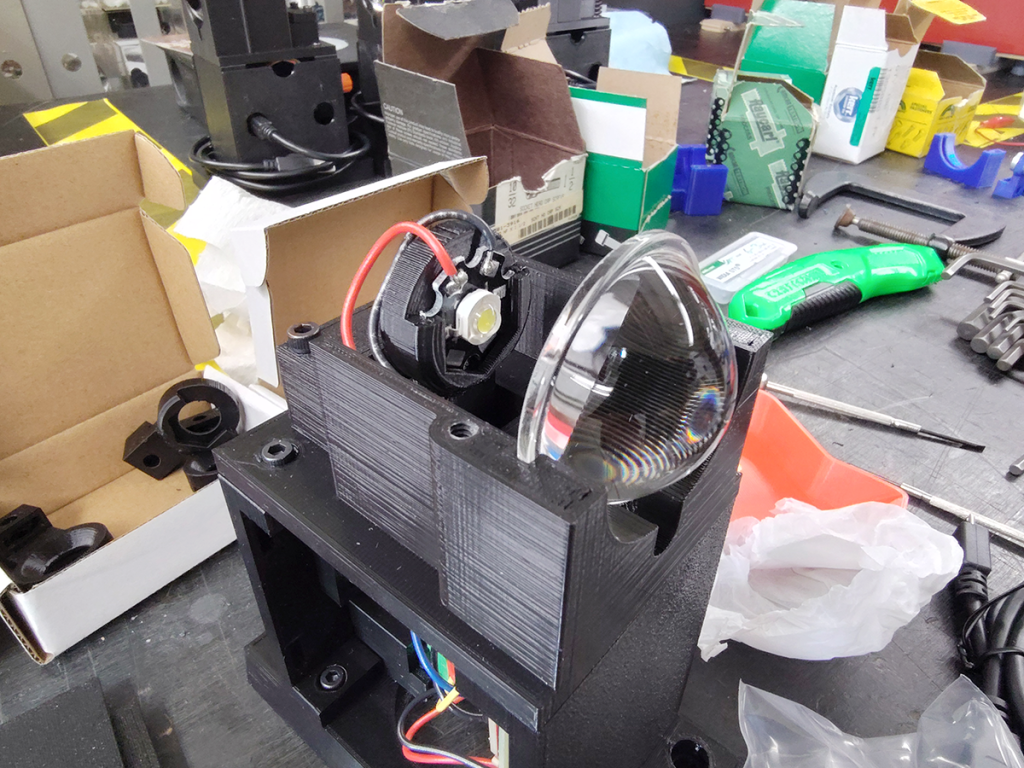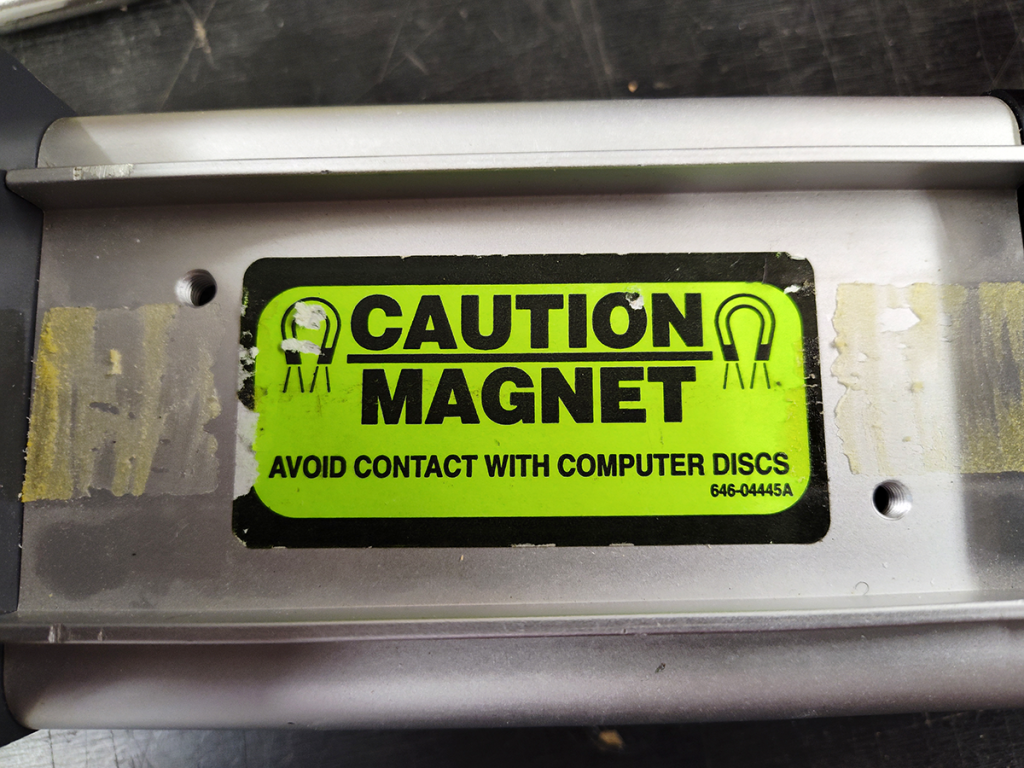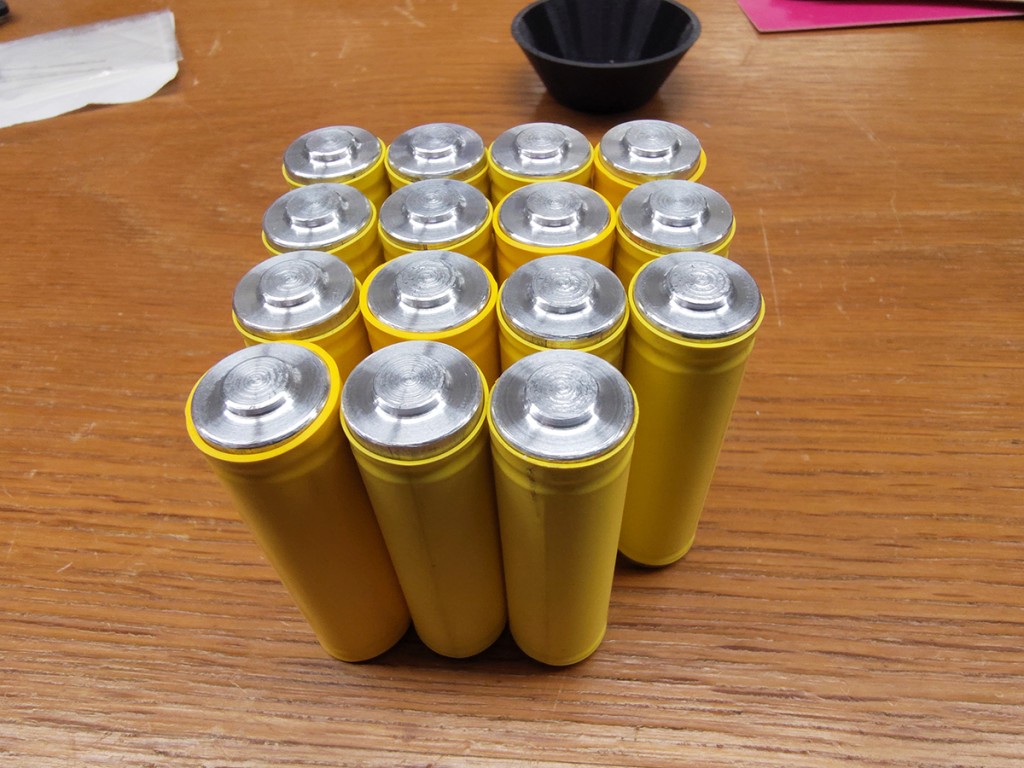
What to do when a battery-powered device would function better with fewer batteries? In our case, a dead-simple DC motor that gives better results when operating at 4.5 V instead of 6 V – but the holder that completes the circuit is sized for four AA batteries.
The answer: a battery-shaped slug of aluminum, which happily conducts current, fits in the place of a functional battery, and has some adorable bright-yellow heat-shrink tubing to stand out! Mostly because bright colors are easier to identify when you drop something on the floor. Round things have a habit of rolling off of surfaces at inopportune times.
